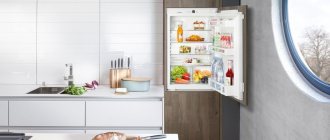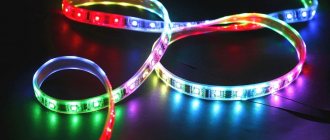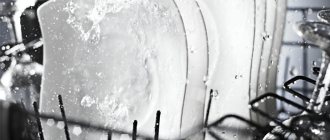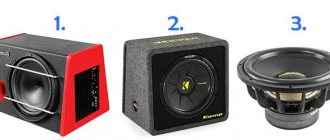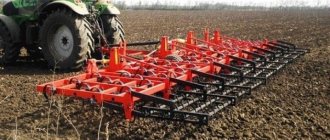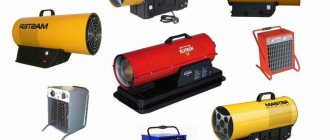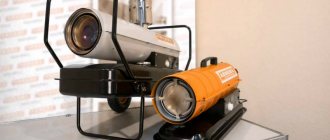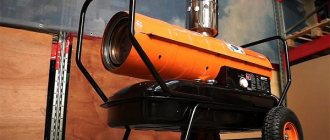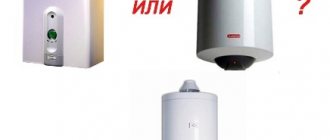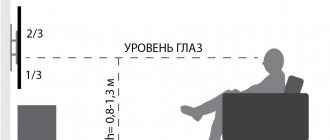Author: Website editors
Publication date: 29.04.2019
Issues discussed in the material:
- What common characteristics do different types of heat guns have?
- How can types of heat guns be classified?
- What are the differences between the types of diesel fuel heat guns?
- What features do electric heat guns have?
- Features of the operation of infrared heat guns
- Features of operation of water heat guns
- What are gas heat guns?
- What are multi-fuel heat guns
- Types of heat guns in a comparison table
- How to choose a heat gun
- How to calculate the power of a heat gun
To quickly heat up a room, you can use a powerful device called a heat gun. There are a great variety of these guns on the market, and their operating technology can be completely different. In this article we will talk about what types of heat guns there are and what differences there are between them.
What common characteristics do different types of heat guns have?
A heat gun is necessary when you need to efficiently and quickly heat various types of premises, for example, a trade pavilion, an exhibition hall, a retail space, a warehouse and other premises in which it is impossible or impractical to install stationary or other types of heating.
Obviously, maintaining the required temperature in any room is very important. This is necessary both for the comfortable work or residence of people, and, in the case of retail or warehouse premises, for the safety of goods.
Why is a heat gun called a gun? The answer is simple: this device is similar to a regular cannon and is made in a cylindrical shape. Special grilles are mounted in the metal body of the heat gun, through which outside air enters the gun and hits the heating element, after which it exits back into the room.
When we said that air is coming out of the heat gun, we were not entirely accurate. The air practically “shoots” out, since a fan system is installed inside the heat gun.
Thus, in a simplified manner, a heat gun can be called a fan that provides not cool, but warm air.
How can types of heat guns be classified?
Like any other complex device, a heat gun has differences according to which it can be classified as one type or another. You can start with the area of application of heat guns, the types of which we will now consider. So, heat guns are divided into:
- household;
- industrial.
In this case, the difference will be in the power of the heat gun. To heat an industrial premises, a high-power heat gun is needed, while a less powerful heat gun can cope with heating a home.
The types of heat guns can also be divided according to the type of fuel consumed for heating:
- electrical;
- water;
- diesel;
- gas;
- multi-fuel;
- infrared.
What are the differences between the types of diesel fuel heat guns?
The use of diesel fuel by this type of heat gun makes their operation somewhat costly. But there are also advantages: a diesel heat gun is mobile, does not have much weight, it is compact and easy to move. With all this, the type of diesel heat guns has good power.
Inside diesel heat guns there is a division based on the peculiarities of the mechanism of operation of the device. So, guns of this type come in direct and indirect heating.
Indirect heating heat guns are safer to operate, since the exhaust does not enter the room, but is discharged outside. Thus, only warm air enters when the indirect heating heat gun operates.
The operating time of a diesel fuel heat gun is limited by the size of its tank; accordingly, the larger the tank, the longer the operating time.
When choosing a heat gun of this type, it is important to take into account its consumption, which directly depends on the power of the gun itself. Diesel heat guns have a power ranging from 13 to 120 kW, respectively, and the flow rate will range from approximately 1 l/h to 6.3 l/h.
Direct heating heat guns, along with warm air, also emit combustion products of diesel fuel. This type is not used for heating rooms; these heat guns are used for drying materials: concrete, mortar, wood. This type of heat gun has a very high efficiency, and it is best to use them in a wide, open area so that the exhaust can dissipate.
If the heat gun has a chimney, then it can be used in rooms where people are constantly present. Many heat guns of this type are equipped with a special system for removing diesel combustion products. When they work indoors, the air is practically not polluted. However, oxygen is burned during operation, so the room must be well ventilated and ventilated.
Modern diesel heat guns are equipped with automatic equipment that monitors the heating temperature of the air, fuel supply and prevents the gun itself from overheating. Devices of this type do not require constant monitoring and can operate autonomously for a long time. If such a gun runs out of fuel or the fan turns off, the automation will turn it off itself. These systems also monitor the state of the flame in the gun.
Important : before connecting any type of heat gun, you need to carefully read its operating instructions. The operation of the unit, which fully complies with its instructions, will be long and trouble-free, as well as safe. It is important to remember that a heat gun is not a battery, and drying things on it is strictly prohibited. Violation of this prohibition risks a fire.
Design and general characteristics
A diesel heat gun runs on combustible fuel - gasoline, diesel, diesel fuel, kerosene, etc., which makes its use on a regular basis costly. Some models consume less fuel without significant losses in performance, but they are also more expensive (for example, the Master diesel heat gun). Heat guns are divided into two types depending on the presence of a smoke exhaust system. Some models may require a power connection to operate, as... this is necessary for the operation of the fan and chimney (if the latter is present). Main components of a diesel gun:
- Burner. Releases a jet of flame that heats the air.
- The combustion chamber. Here the air is heated to high temperatures, heating the walls of the chamber.
- Motor. Required for the operation of some mechanisms. It runs either on fuel or on mains power.
- Nozzle for hot air outlet.
- Fan. Needed to create air circulation near the combustion chamber.
- Fuel pump (all liquid fuel devices have it in their design).
- Fuel tank.
- Fuel valve. Often works from the network.
Features to look for when purchasing:
- Heating power. The recommended value in kW is from 3 for home use, from 20 for large premises.
- Heating method.
- Air flow speed.
- Recommended fuel for use.
- Maximum heating area.
- Fuel consumption coefficient (kilogram of fuel per hour).
- Type of food. In most cases, it is recommended to choose 220 V.
Diesel heating guns have several significant differences from similar heat guns, the two most important of which are that they require flammable fuel to operate and there are strong differences in design, which can make repairs more or less expensive. Let's consider the advantages and disadvantages of a diesel heat gun for the average consumer.
Advantages
- Combustible heat guns are very productive. Warming up occurs quickly, after which the device releases warm air.
- Electricity consumption is kept to a minimum (in some models it is not required at all).
- Most models are compact, which allows them to be quickly folded and unfolded and transported.
- Easy to use. You just need to fill in the fuel and select the operating mode.
- Some models are equipped with a rheostat, which allows you to automatically stop the heat gun when the desired temperature is reached.
- Medium-sized rooms warm up almost instantly, larger ones within a few minutes.
- The gun can operate for a long time without refueling.
- During operation, the device does not heat above 35 degrees, which prevents overheating and undesirable fire.
- A heat gun is not dangerous to people if used correctly and if there is ventilation or a chimney.
We advise you to study - Second-hand apartment: what awaits you when renovating an old apartment
Flaws
- Diesel heat guns make too much noise when operating. However, in some places the operating noise is not so noticeable.
- Most modern heat gun models do not have a backup battery to power the motor and fan, so for normal and safe operation the device must be connected to an electrical outlet.
- It is necessary to control the amount of fuel in the tank and refuel on time.
- It is not recommended to come close to the hot air outlet, because Some models are unsafe and you can get a slight burn.
- High cost of maintenance, because it is necessary to regularly purchase fuel and lubricate some parts.
- Purchasing and repairing diesel heat guns is expensive.
What features do electric heat guns have?
Electric heat guns show increasing sales every year. Guns of this type are universal: they can be used in rooms with people, including residential ones, or installed in industrial premises.
An electric heat gun is more environmentally friendly than its diesel counterpart, because in the process of heating the air no exhaust gases are generated, which does not endanger the health of people near the device.
This heat gun operates on electricity, and it can be connected to a two- or three-phase circuit.
The heating element of this type of heat gun is a heating element or a spiral. The most common are guns with heating elements, since this heating element does not burn oxygen during operation and generally has a longer service life.
Electric heat guns are also equipped with a thermostat, which ensures that the device does not overheat. As soon as the air warms up to the required temperature, the thermostat turns off the power and the gun stops working.
In addition to keeping the gun itself from overheating, the thermostat prevents the air in the room from overheating, and also makes the electric heat gun economical.
When choosing a heat gun of this type, you need to find out whether your network meets the manufacturer’s declared parameters. It is prohibited to use the gun in conditions other than those specified in the instructions. You should also not use an electric heat gun in rooms with high humidity. To protect the device from dust, the gun is placed in a special case during storage.
Features of the operation of infrared heat guns
The main difference between heat guns of this type is that they do not have fans. The work is carried out by a special mechanism that uses infrared radiation to heat the air, and then distributes it in the room.
Air heating occurs due to heat transfer. An infrared heat gun does not heat the entire room, but only a certain zone, which is especially useful during construction or finishing work. It is with the help of a heat gun of this type that you can dry floors or walls after plastering.
Varieties
An important fact is that thermal energy is generated by converting various energy carriers into heat.
As for thermal devices of this type, they are usually divided into types depending on what type of energy carrier is chosen for their processing into heat air flow.
On the modern heating equipment market, heat guns are represented by the following types.
.
In units of this line, the heating element can be presented in the form of a spiral made of refractory metals or a sealed tube called a heating element.
On the modern heating equipment market, electric heat guns are represented by a wide range of models, the power of which varies from 1.5 kW to 50 kW, and models up to 5 kW can operate from a regular household electrical network.
In other words, electric heat guns have found application in almost all spheres of human activity, from heating small private houses to drying large warehouses and industrial premises.
.
The operating principle of units of this type is that diesel fuel energy is used to produce warm air flow.
Diesel heat guns are divided into two main types:
- a direct heating heat gun emits exhaust gases, so it is recommended to use it only in open spaces;
- An indirect heating heat gun operates without polluting the environment, as a result of which it can be used for heating and drying rooms for various purposes.
We advise you to study - How to attach PVC panels to the wall, ceiling, columns: instructions with photos and videos
.
To heat the premises, natural gas is used, which burns out completely in the unit without polluting the environment.
A distinctive feature of units of this type is that the efficiency of gas heat guns is almost 100%.
Gas heat guns can be used quite effectively in crowded places (subways, passages, train stations, etc.), and they are also an excellent heating option in greenhouses.
Water heat guns.
The main feature of units of this type is that the heating element is presented in the form of a heat exchanger through which hot water passes.
Water heat guns can also be connected to an existing heating system, which in turn will significantly increase the efficiency of heating the room.
Infrared heat guns.
The unique design of heat guns of this type is that they do not have a forcing fan heater. In other words, infrared radiation contributes to the formation of heat flow.
When using infrared heat guns, it is worth considering the fact that they specifically heat individual areas of the room, so they can be used effectively when drying plaster or when installing a stretch ceiling.
Multi-fuel heat guns.
In such units, air heat flow occurs due to the efficient combustion of waste oil.
The operating principle of multi-fuel heat guns is that, using a special pump system, waste oil is transferred to a special combustion chamber.
It is worth noting the fact that the efficiency of these units is close to 100%.
Features of operation of water heat guns
As the name suggests, the operation of this type of heat gun requires the presence of water, which is poured into a special heat exchanger. During operation of the gun, the water heats up, after which the resulting heat is transferred to the environment.
The main advantage of heat guns of this type is their economy and efficiency - very little electricity is spent. In principle, a water heat gun is very similar to a battery with a fan. The latter is needed to distribute heat in the room.
Water heat guns are used in greenhouses or warehouses: heating of these structures is not fast, and a gun of this type is an excellent energy saver.
Types of heat guns and their differences
Structurally, heat guns are fairly simple devices, the main components of which are a housing, a heating element and a fan . The gun body, made of metal, which prevents both thermal and mechanical damage, has holes for air intake. The body may have a rectangular shape, but cylindrical heat guns are more common. It is thanks to this shape, which gives rise to associations with the muzzle of an artillery gun, that this type of air heater got its name. To increase mobility, fairly massive and heavy devices are placed on a frame equipped with maneuverable wheels.
Inside the housing there is a heating element (electric heating element/coil or combustion chamber with a heat exchanger) and a powerful electric fan. The fan forces cold air through the holes in the body inside the gun, drives it along the heating element and helps distribute the already hot air throughout the room. Thus, a heat gun is essentially a powerful fan heater.
Depending on the type of energy carrier they use for heating, all heat guns are divided into:
- Electrical;
- Gas;
- Diesel;
- Multi-fuel;
- Infrared.
Below we will look at each of the types of heat guns listed above, talk about their structure, operating principle, main areas of application, advantages and disadvantages.
Infrared heat guns
Infrared heating devices stand apart from heat guns, because they are fundamentally different from all the types discussed above. The heat generated by such a heater reaches the surface at which the gun is “aimed”, not in the form of a stream of hot air, but in the form of radiation. The heated surfaces of walls and individual objects caught in the radiation zone transfer their heat to the surrounding air. The speed of heating the air in this way is much less than using fan heaters, and whether the heating will be general or only local depends on the size of the room. However, being in the radiation zone becomes comfortable for a person in the very first minutes of operation of the heating device.
The main structural elements of an infrared heat gun are a fuel tank, a burner with piezo ignition and a reflector that reflects and directs infrared radiation in the desired direction. Such a heater does not need a fan, because the principle of its operation is not based on forced convection of warm air, like other types of heat guns, but on the transfer of energy through electromagnetic waves.
Design of diesel infrared heater:
1. Deflector. 2. Combustion chamber. 3. Burner. 4. Angle adjuster.
5. Joint blockade. 6. Lever for moving the heater. 7. Fuel line.
8. Fuel return line. 9. Fuel tank. 10. Wheels.
IR guns are used in rooms with poor thermal insulation and/or high ceilings (warehouses, workshops, garages, etc.), as well as in open areas (street retail outlets, summer cafes, verandas). They are often more convenient than fan heaters when carrying out repair and finishing work (for example, for drying plaster or paint), because heating the working surface directly is more rational than heating the entire room to the desired temperature.
Diesel infrared heater.
Electric infrared heater.
Electric heat guns
These are the most versatile and easy to operate devices . A spiral made of refractory metal or a sealed heating element tube is responsible for heating the air. The second option is considered more preferable due to its higher durability and safety. As soon as you plug the gun into the outlet and set the air heating temperature, the fan begins to pump air to the coil or heating element. A stream of warm air comes out of the device, and the room warms up instantly. Using the thermostat, the user can set the maximum permissible heating temperature. When it is reached, the heating will turn off, but the fan will continue to work.
Electricity in such guns is spent both on heating the heating element and on rotating the fan blades. Thermal power ranges from 1.5 to 50 kW . Devices with a power of up to 5 kW can be connected to a regular power supply and used even at home. Most products are equipped with a handle for easy transportation of the device and wheels for greater mobility.
Advantages:
- environmental friendliness. Electric heat guns can be used even in residential unventilated areas, since there are completely no combustion products;
- versatility. The products are suitable for heating garages, auto repair shops, warehouses, greenhouses, cottages, houses, shops, train stations, etc.;
- easy starting at low temperatures, when, for example, liquid fuel analogues require prolonged effort;
- duration of continuous operation and no need to refuel with gas or diesel;
- ease of operation. All you need to do is buy the device and place it in the right place; you don’t have to install a chimney or buy gas cylinders;
- safety.
Minuses:
- electricity is more expensive than gas and diesel, so this type of heating will cost a pretty penny;
- if you need to use a high-power gun, then you need to be connected to a 380 V network and be sure that there are no power outages in the region.
An electric gun is great for quickly heating a cottage, warehouse, office, greenhouse and other premises. As a rule, electrical appliances are used as an additional or backup heat source due to the high cost of operation, but there are exceptions.
Gas guns
The power of gas guns ranges from several kilowatts to half a thousand.
To choose the one you need for your room, you can use the previously given formula. Although electricity is needed here, its consumption is minimal. Voltage is required to ignite and operate the fan.
Gas in such devices burns almost completely. When connected not to cylinders, but to a gas main, such a gun becomes a stationary heat source. These models are used in industrial enterprises and agriculture.
For example, they are better suited for greenhouses than others.
For private use (in a garage, in a house under construction), bottled gas - butane or propane - is also suitable. From stationary, the heater becomes mobile.
To reduce gas consumption and the flame itself, many people replace the factory frog included in the kit with an adjustable reducer.
Advantages of gas models:
- most even heat distribution
- the air is heated by a gas burner
- there is piezo ignition
- electric energy consumption no more than 0.5 kW/h
Natural gas guns can be used to heat buildings with a large number of people - shops, hypermarkets, bus and railway stations, airports.
However, do not forget that when working in confined spaces (especially a small garage or house), it is imperative to ensure a flow of fresh air. At least open and close the doors periodically.
You will still smell the gas and you will feel it by feeling slightly dizzy.
Therefore, such models in small areas are used only for quick initial warming up, and then move on to something else.
Inhalation of vapors from this gun for several hours does not remain without a trace. If you see yellow flames on a gas burner, beware of the emissions
carbon monoxide.
The entire flame is bluish in color - only carbon dioxide CO2 is released.
When operating a gas heater, do not forget about the effect of condensation. If you went into a garage where the temperature was -10C, and after 15 minutes the temperature increased to +20C, the formation of moisture droplets is an inevitable phenomenon.
When burning approximately 2 liters of gas, about 1 liter of water is released in the form of water vapor.
The moisture, of course, gradually disappears, but it is not recommended to immediately put “wet” equipment into operation after such warming up. Wait until it dries.
If there are any electronic devices and tools in the room, it is better to cover them with plastic.
When warming up buildings and garages from very low temperatures from -20C onwards, you may encounter another problem. The fan will have trouble picking up speed in such cold weather. During this period, you should not immediately supply gas. As soon as the blades spin, then turn on the feed.
It also happens that the thermostat freezes and the gun refuses to work. In this case, the “Kulibins” first start the 220V generator, and the relay is heated from its exhaust. After which the gun itself is launched.
Don't forget about noise. The more powerful the unit, the more noise it makes. If you are not working alone, you will literally have to shout over each other. And after an hour of such work alone, you won’t want any more heat.
Diesel guns
Diesel engines have a power from 10 to several hundred kilowatts .
They are divided into direct and indirect heating models. The greatest power is characteristic of the first. However, both types of high power are mainly used only on the street.
Direct heating guns cannot be used indoors. Carbon monoxide is colorless and odorless, and you won't even notice how you pass out.
Indirect heating devices usually produce power up to 85 kW.
kerosene or waste oil can be used as fuel in different guns . These are the so-called multi-fuel units.
They are often bought by car service owners. You no longer have to throw away and recycle waste. Instead, they can be usefully burned.
Directly heated diesel guns have high efficiency. At the same time, pay attention that those companies that indicate specific efficiency figures, and do not write abstract values up to 100%, more than 98%, usually produce really high-quality products, which are backed by real measurements and tests.
These leading manufacturers include models of guns from Ballu Biemmedue or the American company Master.
The continuous operating period of direct combustion models reaches 10-15 hours, depending on the size of the tank. If the heater is equipped with a thermostat, then one refill can be enough for up to a day of continuous operation.
It must be remembered that in addition to burning oxygen, these models also emit exhaust gases. Sometimes you can’t help but feel as if you’re standing next to a Kamaz.
So if you decide to use it not on the street, but in a building under construction, take care of fresh ventilation and a constant supply of fresh air.
This is certainly an excellent option for the street, especially for warming up frozen cars in winter. No gas cylinders or reducers for you.
Multi-fuel heat guns
Multi-fuel heat guns can operate on different types of fuel:
- diesel,
- kerosene,
- used motor oil.
They work on the same principle as diesel guns, but are more versatile in terms of the choice of liquid fuel. They are also produced with direct heating and with fuel combustion in a chamber with gas exhaust (not direct heating).
They are popular for heating car repair shops and garages because they can operate on used motor oil, recycling it.
Multi-fuel heat gun
Water heat guns
As the name suggests, the operation of this type of heat gun requires the presence of water, which is poured into a special heat exchanger. During operation of the gun, the water heats up, after which the resulting heat is transferred to the environment.
The main advantage of heat guns of this type is their economy and efficiency - very little electricity is spent . In principle, a water heat gun is very similar to a battery with a fan. The latter is needed to distribute heat in the room.
Water heat guns are used in greenhouses or warehouses: heating of these structures is not fast, and a gun of this type is an excellent energy saver.
What are gas heat guns?
A gas heat gun is used in approximately the same place and for the same purpose as a water heat gun - heating greenhouses and greenhouses in rural areas. This type of heat gun requires gas to operate, and the devices themselves can be mobile or stationary. Mobile heat guns use propane or butane cylinders, while stationary ones are connected to a gas main.
The efficiency of gas heat guns is comparable to water models.
Gas heat guns differ in the following:
- the air pumped into the gun by a fan is heated by the burner, after which it is released into the room, ensuring uniform heating;
- piezo ignition;
- 100% efficiency with a performance of no more than 140 kW;
- electricity is spent only on piezo ignition and fan operation, which indicates economical consumption - no more than 500 W;
- thermostat.
Compared to electric ones, gas heat guns are not as compact, but they do not require a powerful electrical network, and at the same time they are more economical. The maximum power of guns of this type is 140 kW. If you need to heat a room for a long time, then a gas heat gun is the best choice.
One of the key parameters when choosing a heat gun is its fuel consumption. Different gas models have different power, from 15 to 140 kW, respectively, and fuel consumption will be different - from 0.8 to 5.8 kg/h.
In order to connect a heat gun of this type to the gas main, you will need permission from the relevant authorities. But such permission is not needed if the gun is connected to a gas cylinder. However, a heat gun connected to a cylinder will consume an order of magnitude more fuel than one connected to the main line.
In order not to pose a threat to human health, rooms where a gas heat gun operates for a long time must be equipped with ventilation and regularly ventilated. Otherwise, it is dangerous to be in such rooms, since this type of heat gun burns oxygen during its operation. There is no need to worry about profitability, the efficiency of gas heat guns is very high (close to 100%), so small heat losses from ventilation will not lead to ruin.
Another factor influencing the safety of a gas heat gun is the ability to automatically control flame and overheating. When choosing models, preference should be given to those that have the above functions.
In addition to the above-mentioned advantages of gas models of heat guns: cost-effectiveness, simplicity and efficiency, they have another undeniable advantage - price. Gas heat guns are cheaper than electric or diesel counterparts.
What are multi-fuel heat guns
As a rule, this type of heat gun operates on waste oil, both motor and hydraulic. The pump system in a multi-fuel heat gun delivers oil to the burner bowl, where it burns, releasing heat. During this process, the heat is transferred completely to the external environment, which brings the efficiency of this type of gun closer to 100%.
The multi-fuel gun, along with the gas gun, is the most effective. Models equipped with a thermostat can work 24 hours without interruption. Those guns that do not have this device work up to 15 hours a day.
Multi-fuel heat guns can be either directly heated or indirectly heated.
To avoid endangering public health, multi-fuel guns should be used in areas where people do not congregate and where there is good ventilation. Otherwise, there is a high risk of carbon monoxide poisoning.
How to choose a heat gun
In general, the choice of a heat gun of one type or another is based on two important factors by which almost any equipment is selected. These are your financial capabilities and your requirements for a heat gun. And if the financial possibilities are usually more clear, then the desired qualities of the gun need to be clarified.
- Ask yourself, how often and how regularly will the heat gun be used? For some time in one season or is it planned to work constantly? It is also necessary to understand how much work the gun faces: heating the entire room or only part of it? Having decided on the answers to these questions, you can choose the type of heat gun.
- Another important question that needs to be answered in advance is what type of energy is most accessible? Knowing the answer to this question, you can decide on the type of fuel consumed by the heat gun and save a lot on it.
- Don't forget about safety. If you plan to operate a heat gun in crowded areas, then you need to choose a type that is safe in itself or is equipped with the necessary safety systems (for example, a gas exhaust system).
- It will also be useful to determine the power of the gun, so as not to overpay for its excess, or not to buy a device that will not cope with the task. It is generally accepted that for heating 10 square meters. m. of room you need to use at least 0.8 kW and no more than 1.4 kW of heat. It is also necessary to evaluate the speed of the blown air and the power of the fans in each specific type of heat gun.
These are general tips, now it’s worth taking a closer look at some of the key characteristics that differ between different types of heat guns.
- Power
Power is the main characteristic of any type of heat gun, and indeed all heating devices. The more powerful the heat gun, the faster it will heat the room.
When we talk about the power of heat guns, we mean their thermal power (the performance characteristic of the device), and not their electricity consumption. The last indicator is important only for electric heat guns. For gas types of these devices, as for liquid fuel types, electricity consumption is not so important, since it is needed not for the operation of the gun itself, but for the operation of fans and various types of automation. Typically, these types of heat guns consume tens to hundreds of watts.
Let's return to thermal power. This indicator for those types of heat guns that operate on liquid fuel can reach 220 kW. But such indicators are typical for direct-heating guns, while indirect-heating devices are much weaker, their power does not exceed hundreds or a little more than kilowatts. Gas heat guns usually have a maximum power of up to 150 kW, although some stationary types of these guns can be more powerful. Infrared guns have a maximum power of up to 50 kW.
As for electric heat guns, their varieties have a power of up to 50 kW, although some industrial devices can have twice as much power. Many types of them can heat the room in steps, depending on current needs. Electric heaters whose power does not exceed 5 kW are considered household, and more powerful ones are considered industrial. This division is due to the fact that household appliances can operate from a conventional electrical network with one phase and a voltage of 220 V, while more powerful industrial appliances require 380 V and a three-phase network. And this is a very important parameter that directly affects the choice of one or another type of heat gun. Before you buy a device, you need to make sure that the electrical network can handle its operation.
- Airflow
Heated air is supplied to the room by an electric fan inside the heat gun. Accordingly, the more efficient the fan, the faster the room will warm up. The efficiency of the fan is directly related to the power of the heat gun. In addition to the fact that a powerful fan will ensure quick heating of the air, it also protects the gun itself from overheating. From all this follows such a characteristic as air flow.
Air flow, or as it is also called - the performance of heating equipment - is the volume of air that the gun produces per hour of operation. The higher this indicator, the faster the room will heat up.
Note that infrared guns do not have fans and this parameter does not apply to them.
- Fuel type
For gas-fired heat guns, the fuel is:
- natural gas from the central pipeline;
- liquefied gas (butane or propane) in cylinders.
This type of fuel is cheaper than diesel, and, especially, electricity. Moreover, even bottled gas is cheaper, and even firewood cannot “outperform” the efficiency of main gas. From here we can draw a logical conclusion that if you need to heat large rooms, then you won’t find anything more cost-effective than a gas heat gun.
Liquid fuel heat guns can consume diesel fuel or kerosene. Moreover, manufacturers do not expand the list of possible types of fuel, limiting themselves to these two. Fueling heat guns with alcohol, naphtha, gasoline or any other flammable fuel is strictly prohibited. Ignoring this prohibition will result in fire, explosion and equipment failure.
It is also worth paying close attention to the quality of the fuel so as not to expose filters or injectors to increased wear. Low-quality fuel also harms spark plugs: carbon deposits form on them. The use of low-quality fuel serves as grounds for refusal of warranty repairs if the service department finds out that the heat gun broke down for this very reason.
There are also types of heat guns that operate on waste oil - engine, transmission, hydraulic oil and their mixtures. However, transformer oil and high-viscosity lubricants cannot be filled into such guns. Before filling the gun with any oil, it must be cleaned of mechanical impurities and water.
Infrared guns operate on liquid fuel, gas, and electricity. Their fuel quality requirements are the same as for liquid fuel types of heat guns.
In addition to the type of fuel and its availability, when choosing the type of heat gun, you should also take into account fuel consumption.
- Dimensions, mobility and weight
The weight and dimensions of a heat gun are proportional to its power and design. Small and lightweight devices are used for heating residential and office premises. Heavier, but also more powerful types of heat guns are used in industry and agriculture.
The lightest and most compact will be electric heat guns, whose weight does not exceed 30 kg. Accordingly, any such gun will also be mobile. This type of gun is almost ideal for household use - such guns do not emit harmful substances, are easy to use and, as you can see, light and compact.
Light weight and small dimensions are also typical for gas heat guns, but these devices cannot be called mobile. The reason is simple - gas guns are connected to a gas source, and if this source is a gas main, then it is not possible to move the gun to any place in the room.
Liquid fuel heat guns have significant weight and dimensions, since in addition to the gun, they are also equipped with a fuel tank and a combustion chamber. And if a gun of this type is indirectly heated, then it will be connected to the chimney, which reduces its mobility to zero. It is also worth saying that after refueling, the weight of the entire structure will increase according to the amount filled.
Liquid fuel heat guns can be very large and heavy, such that special equipment may be required to install and transport them. To operate such a device, you need to prepare in advance a strong and level platform that will support the weight of the heat gun.
It would be a mistake to assume that if the dimensions of the heat gun allow it to be indoors, then there will be no additional problems. This is not true - the heat gun must be located at a great distance from objects, especially if they are flammable and combustible materials. Also, the heat gun should not be located in places where people regularly walk. Therefore, for small rooms (narrow or small areas), it is better to choose a compact heat gun.
Technical properties and characteristics of heat guns
The first thing you should pay attention to is the parameters suitable for the normal and high-quality operation of the heat gun. It is necessary to select according to power and suitable electrical voltage
For the first characteristic, there are two main calculation options. A simple definition is that for heating 10 sq.m. rooms need at least 1 kW of electrical power. And if you have a room of 4x6 meters, simple calculations will show that you need to purchase a heat gun with a power of at least 3 kW.
We got this indicator like this:
4 * 6 = 24 sq.m., taking into account that the electrical power reserve must be at least 20%, we calculate: 2.4 * 1.2 = 2.88 kV. The closest value will be 3 kW, and this is what you need to select for heating this room.
We advise you to study - Technical characteristics of laminates of various wear resistance classes
The second calculation method is more accurate, and we recommend using it when choosing a heat gun for your home.
In this case, the formula does not take into account the area of the room, but its volume and the thermal conductivity coefficient of all walls. And the formula takes the following form: P= (V*dT*Kt)/860, where:
V is the volume of the room, calculated as the area multiplied by the ceiling height, m3;
dT - temperature difference between the room and the environment;
Kt – thermal conductivity coefficient. An indicator from 0.6 to 1 is for walls with good thermal insulation. With average thermal insulation - from 1 to 2. With poor thermal insulation - from 2 to 3. Old houses - from 3 to 4.
860 is the number of kcal in 1 kW.
To make the essence of the calculation more clear, let's consider it with an example. You have decided to purchase an electric gun to warm up your car. The garage volume is 4x6 meters, the ceiling height is 3 meters. The temperature inside the building is +15C, outside -20C. The temperature difference is 35C. The garage is insulated quite well, we select the thermal conductivity coefficient 1. As a result of all the indicators, the formula takes the following form: 72*35*1=2520 kcal/hour.
To convert the value to kW, you need to divide it by 860. This turns out to be 2.93 kW. Taking into account the required reserve, you need to choose a heat gun of at least 3.5 kW, and this will be quite enough.
It should be noted that currently there is a conditional classification of all thermal devices by power. It is generally accepted that up to 5 kW these are heat fans, and above this power – heat guns.
We also note that the all-stamped impeller creates a more powerful flow of warm air. If you need a good electric heater for repairs, for example, for the installation of a suspended ceiling, we recommend choosing a device with just such a fan.
We wrote above about how to choose the right heat gun for your home and garden. We hope that this information was useful and interesting for you. And in the future, you can easily choose the electric heat gun you need.
